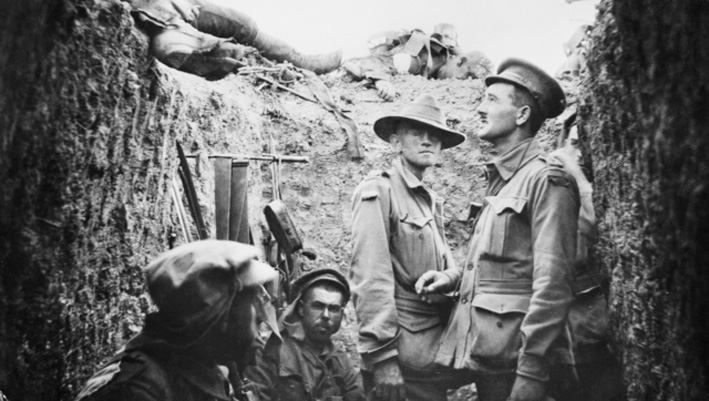Australian troop landings on Turkey’s Gallipoli peninsula on April 25, 1915, signalled the start of a legend.
It is a day now commemorated as the entry of a young nation into world affairs.
Australians soon developed an aura. “Dash and individualism combined with an intense spirit of comradeship were to create units of formidable offensive power,” read one testament. However, initial poor planning, the geography and Turkish resistance prevented actual troop advances.
The steep hillsides above the beaches became a recurrent scene of fresh troops heading up; wounded and dead coming down.
By May 4, Australia and New Zealand had lost 10,000 men, the Turks 14,000, and trench warfare was established. The long agony of Gallipoli would continue for many more months.
One Digger who landed on the first day of the Gallipoli campaign is commemorated on the Bacchus Marsh Avenue of Honour. Charles Arthur Gladman was one of three brothers to serve in the Great War.
Charles was working as a labourer when he enlisted on September 12, 1914. A month later he was on a troop transport bound for Egypt.

G Company 8th Battalion, Gladman’s unit. Photo: Australian War Memorial
Only 162.5cm tall, he was not only a regular soldier but also a bugler, presumably calling soldiers to arms and serving at burials.
Charles landed at Gallipoli on April 25, 1915, as part of the famous 8th Battalion. This first day-landing of the Gallipoli campaign was an immense source of pride. The 8th Battalion was also involved in the legendary battle of Lone Pine that month. Despite illness, Charles survived the battles of Gallipoli and returned to Egypt. He went on to serve in France and, in 1916, received severe head, arm and thigh injuries in the terrible attack at Pozieres.
Returning to duty in 1917 after treatment in a military hospital in England, Charles lost his left eye and most of the sight in his right eye at the famous and bloody battle of Broodseinde.
After further treatment in England, he was repatriated to Australia in 1918, surviving on a disability pension until his death in 1948 at Ballarat, aged 54. His brothers, James and Frederick, also survived the war. Tree number N115 on the Bacchus Marsh Avenue of Honour commemorates Charles Arthur Gladman.
The Great War Centenary Committee, Bacchus Marsh, has provided this sixth article in a series on 1914-18 to mark centenaries of World War One. It was assisted by Melton & Moorabool StarWeekly (originally The Bacchus Marsh Express).
Lerderderg Library has three displays marking World War 1 centenaries. The Great War Centenary Committee, Bacchus Marsh, has provided two displays: the first about Australia’s first military action, the attack on German New Guinea; the second explaining the origins of the Flanders poppy as a symbol of remembrance. The third is a wonderful exhibit by Bacchus Marsh Historical Society.
Anzac Day centenary: Melton and Moorabool special
Click here for our complete coverage







